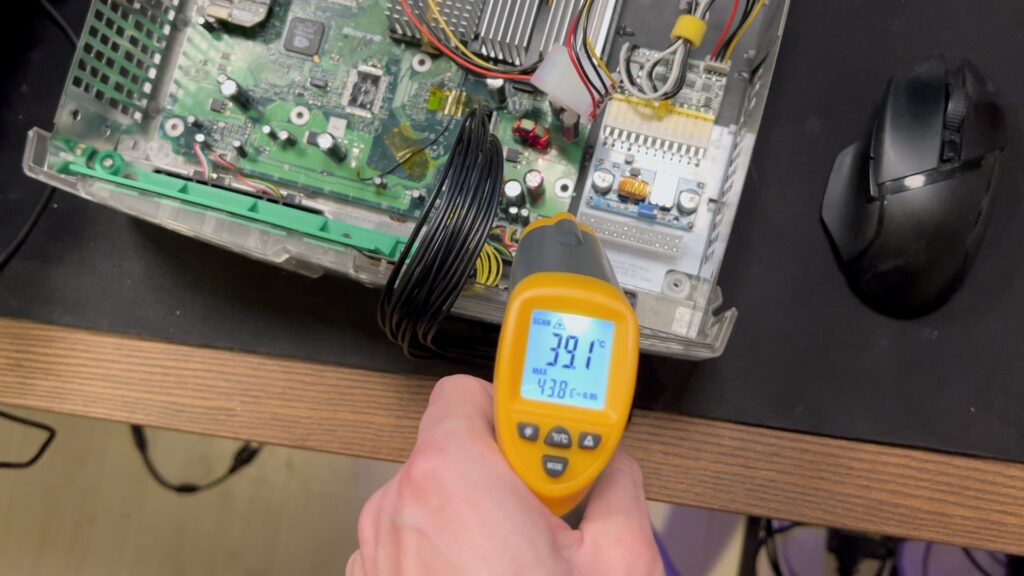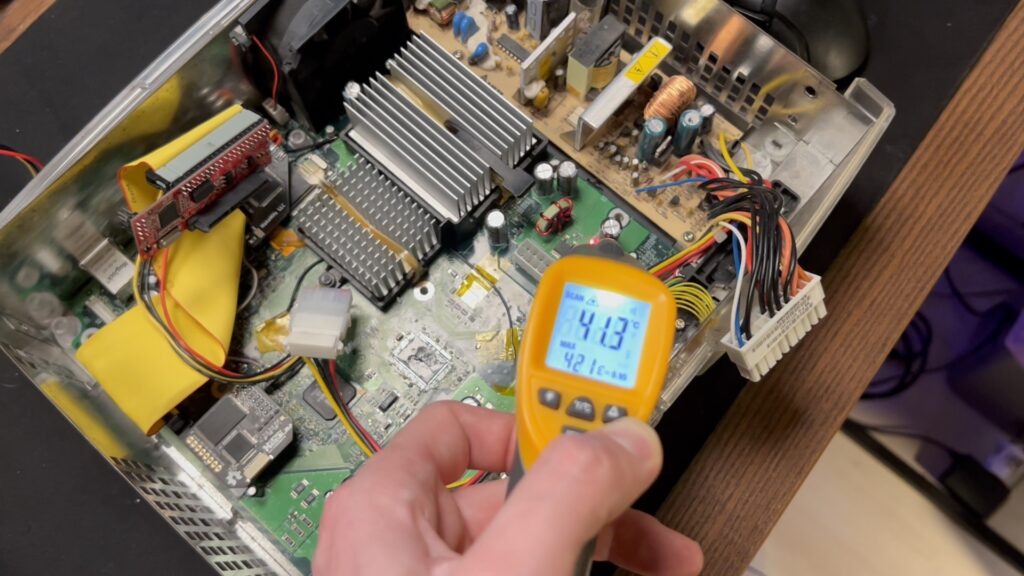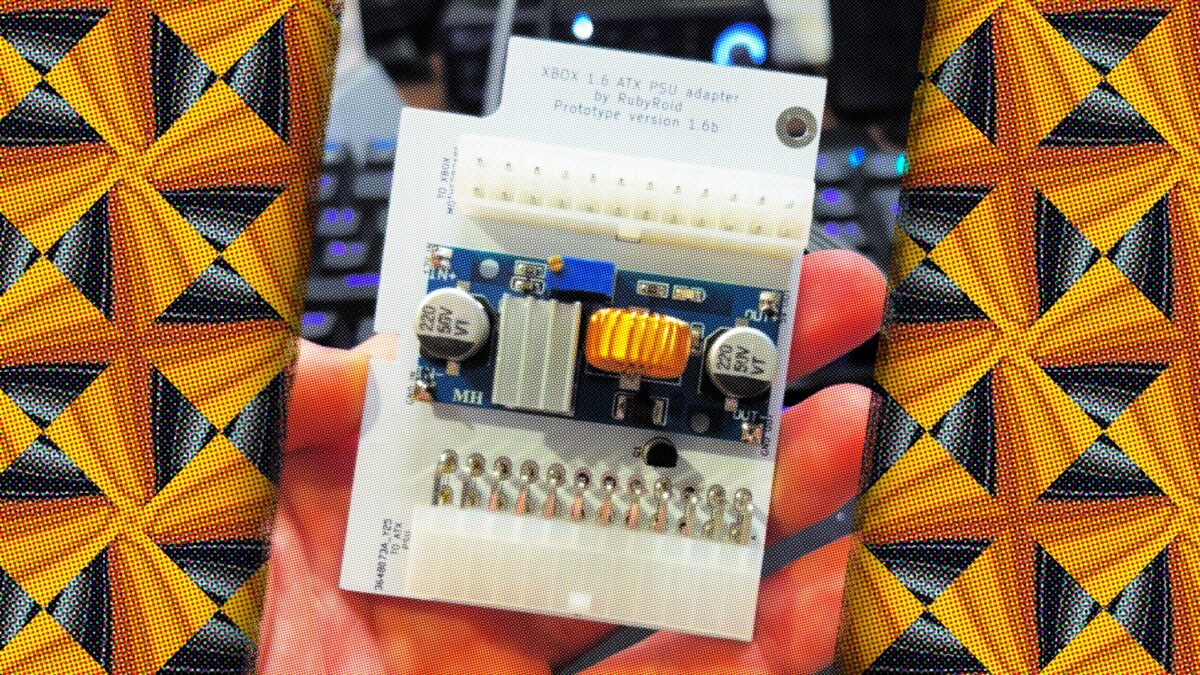In this update I wanted to show my latest prototype and see how use of my adapter affects temperatures on the Xbox motherboard around the power connector.
First, the new prototype looks like this:
I think it looks very nice!
First thing you’ll notice is that now it has an integrated DC-DC converter, which I mounted above the board on four pins.
The output connector has been replaced with a female one, which provides a more secure connection and more clearance when the HDD caddy is installed above.
I can’t say that I’m 100% happy with it’s current placement as once the ATX cable is inserted, it gets quite tricky to put the caddy on top. I had to bend the cable in a very particular way to make it work. Probably I should switch to a 90 degree connector, same as the input one but I want the connector to look differently to better differentiate the input and output.
Also the ATX cables I used have disappeared from both Amazon and AliExpress. I can only find very long and expensive alternative, so it seems like I’ll have to build the cables myself.
This has both good and bad consequences: I will be able to make cables of good quality and precise length but they will cost more and take additional time to produce.
I’ve ordered all the required tools, wires, connectors and pins to build a few cables and will demonstrate the result in one of the following project updates.
Next I decided to see how the board temperatures compare with original PSU and my adapter.
The methodology was quite simple:
- Play for 30 minutes
- Check the temperatures
- Replace the PSU
- Play for another 30 minutes
- Check the temperatures again
- Compare results
To measure the temperature I used a pyrometer with a laser pointer. The main points I wanted to focus on were the 5V capacitors, coils, and the PCB itself around the power connector.
First I tried it with my adapter and the highest temperature was on the capacitors closest to the CPU heatsink, around 42°C.

Next I repeated the process with original PSU taken from another working Xbox, it showed similar temperature readings with tiny deviations (plus-minus one degree).

It showed that my adapter has similar temperature performance and shouldn’t cause an overheat which makes me more confident in that the project is moving in the right direction.

